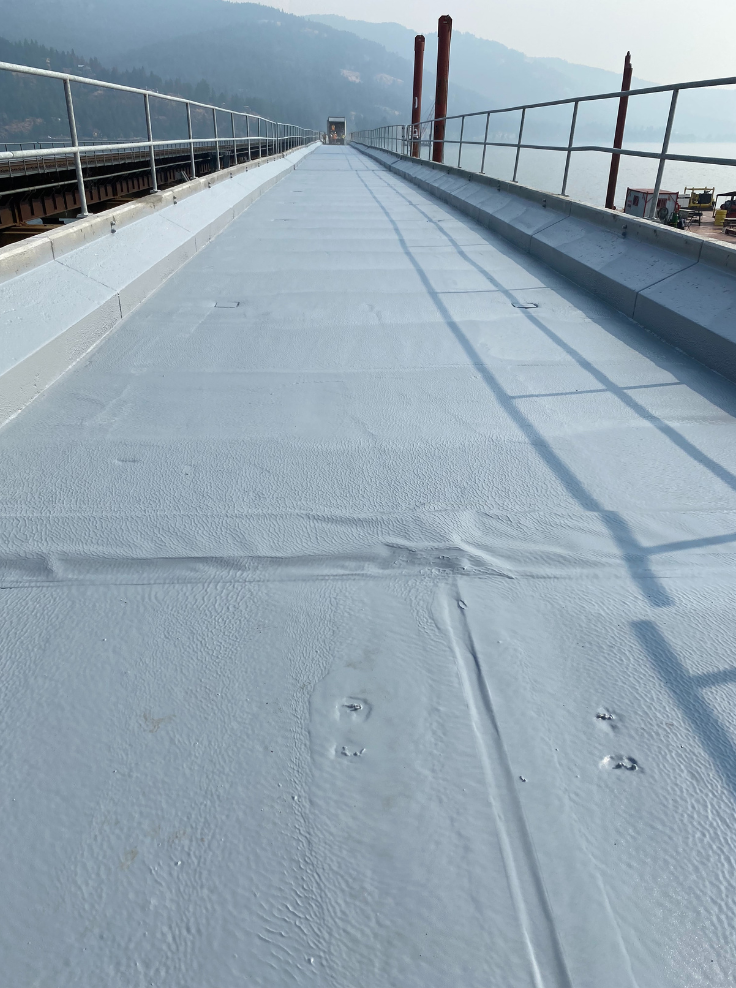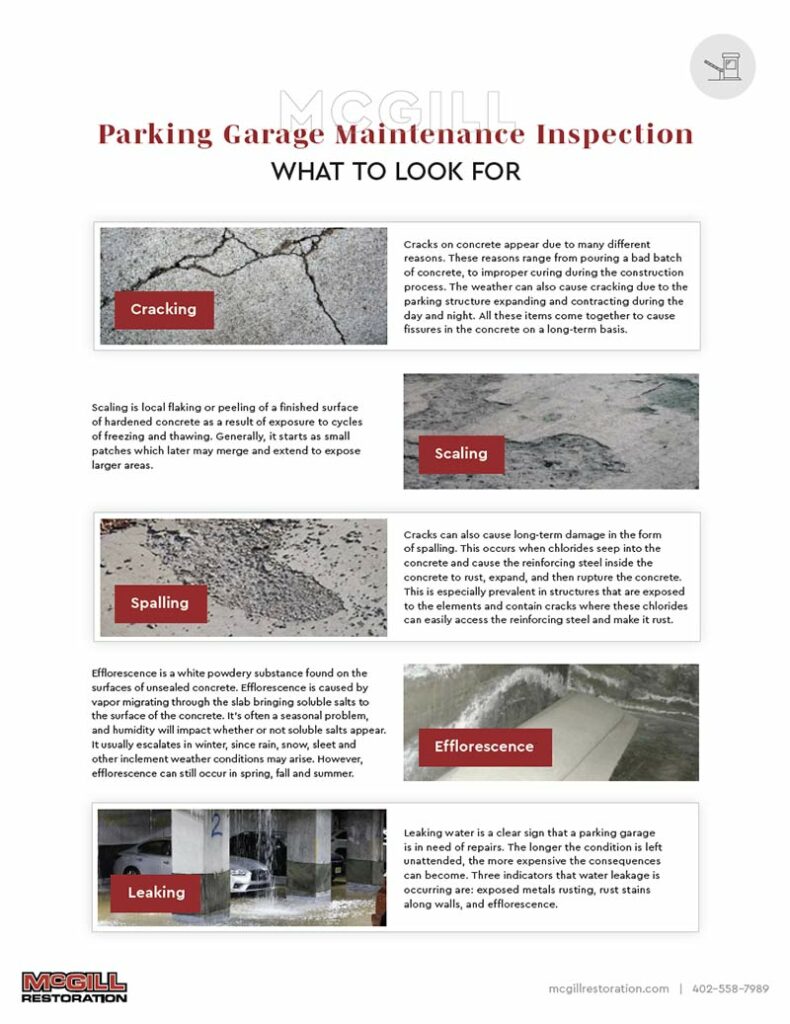Technique Spotlight: Protect Your Concrete and Steel with CLAM Applications
When concrete and steel are exposed to the elements while also experiencing constant wear, the materials need some form of lasting protection. High-traffic surfaces are especially vulnerable and the construction world has seen an evolution of methods and materials used to protect everything from roadways to rooftops.
What Is Cold Liquid Applied Membrane?
When it comes to coatings and specialized applications, one really stands out on a variety of projects. Cold Liquid Applied Membrane (CLAM) is a multi-step polyurea application that cures almost instantly.
The material is flexible, resilient, durable and is proven to be highly effective on DOT surfaces, rail bridges, roofs and more. Its value is clear and the need for quality CLAM application is increasing in our market on a wide range of projects.
At McGill Restoration, our team is one of the few capable of large-scale applications in the Midwest and beyond because we have the speciality expertise and equipment to get it done right. To date, we have completed projects in Nebraska, Florida and Idaho, and we are dedicated to ensuring projects in need reap the benefits of this specialized technique.
How We Apply CLAM
One of the major benefits of CLAM is the instant curing of materials. After spraying, it cures in a matter of minutes. That doesn’t mean it’s easy to apply however. Everything must be prepared perfectly and applied under the right conditions.
Here’s how the application process happens on many projects:
- First, we prepare the concrete or steel. We blast and grind to completely clean the surface. This step is tedious and essential for creating a bond. We also roughen the surface to strengthen the bond.
- We mix materials in the pumps and apply the initial primer.
- After the primer cures, we apply the base coat.
- Lastly, we apply the top coat and it cures almost immediately.
Application requires exact mixtures of active ingredients and specialized equipment to evenly apply each coating. The pumps and sprayers associated with large applications like those on DOT projects are a major investment and we have all of the equipment on standby.
Smaller applications benefit from more mobile equipment and we also carry pumps and sprayers designed to operate in tighter quarters.
Weather Conditions are Imperative to CLAM Applications
The only potential setbacks in CLAM applications involve weather conditions. Humidity and dewpoint are especially sensitive and must reach the right tolerances for application. Our crews are constantly monitoring weather so we can apply the materials under optimal conditions.
On the upside, the quick curing process means projects speed along and roads are placed back into service with little downtime.
Post Application Benefits
After the CLAM is applied and cured, the surface is ready for traffic. On DOT roadways, it can withstand a full week of traffic before asphalt is laid down. This is great for project logistics because the road will remain open, saving time and expense associated with detours and delays.
Another reason for choosing CLAM involves the resiliency in a variety of weather conditions. The flexible nature of the material allows it to expand and contract as the weather warms and cools. Rather than cracking and turning brittle, it flexes and continues performing for a long time.
A Few Notable McGill Restoration CLAM Projects
Our crews have worked hard to perfect the CLAM application process and we are securing private and public projects across the country (see notable examples below). From investing in the right equipment to training and studying the literature, we are your dedicated CLAM application experts.
I-680 and I-480 DOT Projects
These large DOT projects use CLAM on critical road bridges. Concrete bridges are major infrastructure investments and protecting the concrete is important. We applied CLAM to a number of bridges, working at night to complete the applications so the bridges could reopen immediately after each application.
The DOT chose CLAM, knowing the values it brings to concrete bridges. Each bridge was open to traffic for a few days until asphalt crews arrived for the final road surface installation.
Rail Bridge Project
Rail bridges are also important infrastructure projects but unlike DOT projects, they are private. Our specialized skills and track record with CLAM has created a demand for rail bridges in a variety of locations.
Our crews have completed CLAM applications on rail bridges in Florida, Idaho and Minnesota and we expect to continue working on these projects as the need arises.
Beyond DOT and rail bridges, we also complete applications on concrete rooftops, typically on parking structures. Really any manufacturing facilities with important concrete elements and a variety of other buildings using concrete and steel that require protection are all candidates for CLAM.
Do you have a project that can benefit from CLAM applications? Get in touch to see if CLAM is right for you.



